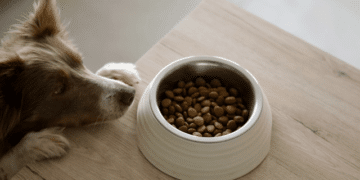Spending time with your furry friend is already one of the best parts of life—but what if you could also teach your pet fun tricks in just a weekend? Whether you’re hoping to impress your friends, bond more closely with your pet, or just give your pet some much-needed mental stimulation, pet training at home can be both simple and rewarding.
Even if you’ve never tried training your pet before, don’t worry. You don’t need to be an expert to get started. With a little preparation, patience, and plenty of treats, you can teach your pet some beginner pet tricks that will have tails wagging (or whiskers twitching) in no time.
Why Teach Your Pet Tricks?
Teaching your pet tricks isn’t just about the entertainment value—though, let’s be honest, watching your dog spin in a circle or your cat give you a high five never gets old. It’s also a great way to:
-
Strengthen your bond
-
Stimulate your pet’s mind
-
Increase your pet’s confidence
-
Reduce boredom-related behaviors
-
Burn off excess energy
Best of all, it’s fun for both of you. So why not dedicate a weekend to learning something new together?
Get Prepared for a Successful Weekend
Before you dive into training, a little prep can go a long way. Teaching your pet tricks is much easier when the environment is set up for success. Here’s what you’ll need:
-
Treats: Small, soft, and irresistible. These will be your main tool for positive reinforcement.
-
Clicker (optional): A clicker can help with timing and communication. If you don’t have one, a verbal cue like “yes!” works too.
-
Quiet space: Minimize distractions to help your pet focus.
-
Short sessions: Aim for 5–10 minute training bursts. Pets (especially younger ones) can lose focus quickly.
Also, remember that patience is key. Not every trick will be mastered instantly, and that’s okay. Celebrate progress, no matter how small.
Easy Tricks to Start With
For weekend pet training, stick with fun dog tricks (or cat tricks!) that are simple and achievable. Here are a few beginner pet tricks to try:
1. Sit
This is a foundational command and a great place to start.
-
Hold a treat close to your pet’s nose.
-
Slowly move your hand upward, allowing their head to follow the treat and their bottom to lower.
-
Once they’re in a sitting position, say “Sit,” give the treat, and praise.
2. Shake Paw
A classic handshake never goes out of style.
-
Start with your pet in a sitting position.
-
Gently lift one of their front paws while saying “Shake.”
-
Give a treat and praise.
-
Repeat until they begin to offer the paw on their own.
3. Spin
This one’s fun and great for energy-burning.
-
Hold a treat in front of your pet’s nose and slowly move it in a circle.
-
As they follow the treat, say “Spin.”
-
Once they complete the circle, reward them.
-
Practice in both directions to avoid dizziness.
4. High Five
This trick is a crowd-pleaser.
-
Hold a treat in your fist and let your pet paw at it.
-
As soon as they lift their paw, say “High five!” and reward.
-
With repetition, your pet will associate the command with the action.
5. Roll Over (Advanced)
A bit trickier, but totally doable with time.
-
Have your pet lie down.
-
Hold a treat near their nose and move it slowly toward their shoulder.
-
As they turn their head to follow, guide them into a roll.
-
Say “Roll over” as they do it, then reward.
A Weekend Training Schedule
Here’s a suggested breakdown for how to teach your pet tricks over a weekend without overwhelming them (or yourself):
Saturday Morning
-
Warm-up with basic obedience (sit, stay)
-
Introduce “Sit” and “Shake Paw”
-
2–3 short sessions with play breaks in between
Saturday Afternoon
-
Continue “Sit” and “Shake”
-
Introduce “Spin”
Sunday Morning
-
Review Saturday’s tricks
-
Introduce “High Five”
Sunday Afternoon
-
Try “Roll Over” if your pet is doing well
-
End with a fun trick your pet enjoys most
Remember, repetition and rewards are key. Don’t rush, and always end on a positive note—even if that means stopping after just a few successful repetitions.
Troubleshooting and Extra Tips
My pet won’t focus.
Try training in a quieter environment or use higher-value treats. You can also tire them out with a short walk or play session before training.
My pet seems confused.
Break down the trick into smaller steps and reward each one. Keep it simple and build up gradually.
We’re not making progress.
Every pet learns at their own pace. Don’t stress—keep sessions positive and celebrate the little wins.
Can I teach cats too?
Absolutely! While they may be more independent, cats can learn tricks like “sit,” “high five,” and even “jump through a hoop” with the right motivation (usually treats or toys).
Wrap-Up: Make It a Habit
By dedicating just one weekend, you can teach your pet fun tricks and lay the foundation for ongoing learning. The key is to keep it positive, short, and consistent. Over time, your pet will look forward to training sessions as much as you do.
Pet training at home doesn’t need to be complicated—just playful and patient. Once you’ve mastered these beginner pet tricks, consider leveling up to more advanced challenges. Your pet’s potential is only limited by your imagination.









